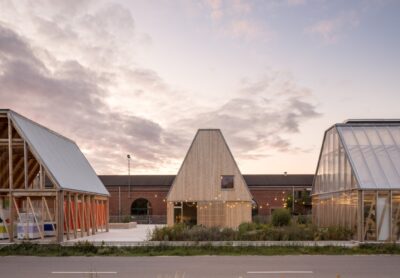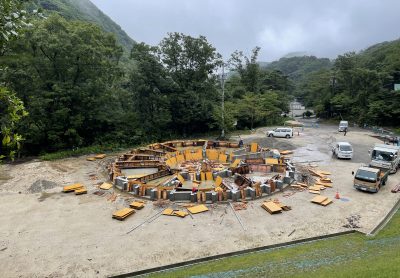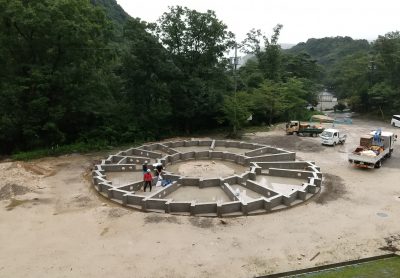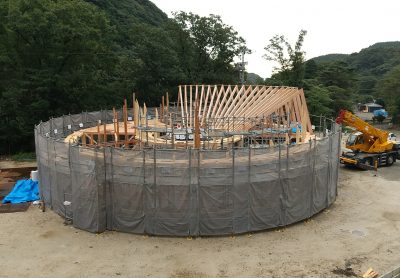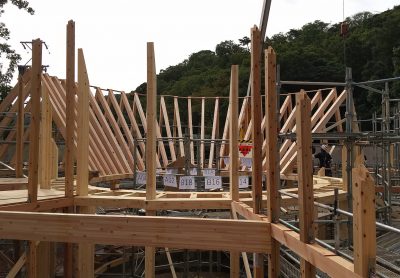Less CO2 = Greater responsibility in the building industry: Are you on top of the new requirements?
Less CO2 = Greater responsibility in the building industry: Are you on top of the new requirements?
New Carbon requirements pave the way for a greener transition in construction
The construction industry faces significant changes as new climate requirements come into effect on July 1, 2025.
To build structures that are both climate-friendly and energy-efficient, we need to think differently and smarter—a fundamental shift in how we design, construct, and use buildings in the future. This is not just a necessity to meet the 2030 climate goals—it’s also an opportunity to create more sustainable and economically efficient solutions.
As part of the Danish and European climate collaboration, construction has become a key focus area in reducing CO2 emissions. Even today, we have strict requirements for energy and material use, but this summer, the regulations will become even more stringent. In short, the 2025 requirements will entail:
- Lower CO2 threshold values for new buildings.
- Mandatory LCA documentation for even more building types and sizes.
- Increased incentives for reuse and recycling with the option to reject the demolition of existing buildings.
- The construction process must be optimized for energy efficiency, and waste management on construction sites will become crucial.
Energy-efficient buildings
Starting in the summer of 2025, constructing buildings with high energy consumption will become even more challenging. The Danish Building Code (BR18) will be updated to ensure that new buildings have significantly lower energy impact. Energy consumption in buildings must be greatly reduced, meaning energy sources like solar panels, heat pumps, and energy-efficient insulation materials will become essential.
Circular economy and reuse for CO2 reduction
Building materials account for a significant portion of the construction sector’s climate impact. As a result, stricter requirements are being introduced to ensure that building materials are CO2-neutral or have a lower CO2 footprint.
This means that the choice of materials such as concrete, steel, and wood will become even more critical. Incentives will be provided for selecting recycled materials and sustainable alternatives. The materials used must document their CO2 footprint throughout their entire lifecycle—from production to demolition—known as Life Cycle Assessments (LCA).
Another key aspect is the circular economy. There is increasing focus on building according to the principles of Design for Disassembly—a method where buildings and their components are designed to be easily dismantled and either reused or recycled. In the future, buildings will be evaluated on their recyclability and flexibility.
But how can a building be dismantled without harming the environment? And how can the materials be used in new projects?
This is where innovation comes in, with solutions like modular construction, recycled concrete, and other approaches that make construction more sustainable.
Project: Ugakei Hygge Circles | Japan
Healthy indoor climate and extreme weather: Adapting to future climate changes
The indoor climate of buildings plays an increasingly important role in discussions about sustainability. The new generation of climate-friendly buildings considers both the environment and the people who occupy them.
This includes requirements for improved ventilation, the use of healthy materials, and a focus on optimizing natural daylight. A building’s ability to regulate temperature and air quality will be crucial for creating a healthy indoor climate, which also impacts the building’s overall energy consumption.
Climate change presents challenges for built environment, which must become more resilient to extreme weather conditions such as heavy downpours that lead to flooding.
There will be increasing demands to account for these factors in building projects—both in the choice of materials and in the building’s placement and design. For example, the foundation and drainage of a building may need to be adapted to new climate conditions.
New threshold values from 2025
Starting in 2025, threshold values for CO2 emissions will be introduced, depending on the type and size of the building. Additionally, a separate threshold value will be established for the climate impact of the construction process. This increases the need to integrate sustainability throughout the entire lifecycle of a construction project.
Examples of threshold values (in kg CO2-equivalent per m² per year):
- Single-family houses and townhouses over 150 sqm: 6.7 in 2025, decreasing to 6.0 (2027) and 5.4 (2029)
- Holiday homes under 150 sqm: 4.0 in 2025, decreasing to 3.6 (2027) and 3.2 (2029)
- Apartment buildings and commercial construction: 7.5 in 2025, decreasing to 6.8 (2027) and 6.1 (2029)
- Construction process: 1.5 in 2025, decreasing to 1.1 (2029)
The construction industry is responsible for a significant portion of Denmark’s CO2 emissions. These new requirements are part of a plan to make construction more sustainable and achieve the 2030 climate goals. This is not only beneficial for the climate but also for future buildings, which will be healthier and more durable.
Let’s take a step toward a greener future—together!
If you or your company need support in meeting the stricter LCA requirements and documentation, we offer guidance and tailored courses on topics such as classical and dynamic LCA, bio-based materials, recycling, and circular construction—critical areas for complying with the new climate regulations.
- Post Categories
- Latest news

